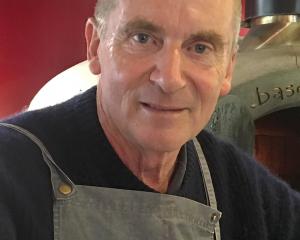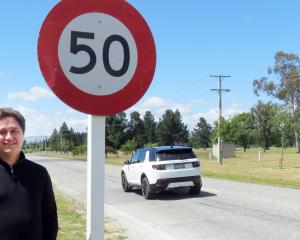This 1970s A-frame house has been given a new lease on life — and earned a string of awards for a Queenstown building firm.
The judges for the southern region of the Master Builders House of the Year competition said the builders did an outstanding job on what was a complex renovation.
This involved propping up the house to enable a large area to be dug out and additional rooms to be added underneath.
The project won Velvin Building the supreme renovation of the year, the craftsmanship award, a gold award and the renovation award in the $1million to $2m category.
Known for their distinctive triangular roofs, A-frames were popular as holiday homes in the 1960s and ’70s. The sloped sides of the roof formed two of the home’s walls and the wide ground floor tapered to a peak at the floor above, creating unusual interior angles.

"The house was ready to fall into the lake. It was on a lean and nothing was straight or level.
"But they really wanted a classic Kiwi A-frame and the only way really to do that on the site was to retain the existing structure."
Designed by Robbie Dick from The Habitat Design Co, the renovations took about 18 months.
For part of that, the builders had to "work backwards", Mr Velvin-Turner said. Usually, they would pour the floor and foundations together, then put frames in. In this case, they had to prop up the existing floor structure, remove the existing wall framing and build one new wall at a time. Once the framing was in, they poured the concrete floor inside the space.
Digging out underneath the house allowed the owners to add bedrooms, a media room, a bathroom, a laundry and a garage at the bottom level, the judges noted.
"As you climb up the new stairs to the living room level, you are treated to stunning views of Lake Wakatipu, all with an unmistakable log cabin vibe."

A steel spiral staircase that linked these living spaces with the top two bedrooms just fitted, Mr Velvin-Turner said.
"I made a cardboard cut-out of it to scale and just checked it was going to be able to stand up because it’s such an odd shape."
Given their sloping walls, A-frames traditionally have less usable space than other houses. However, replacing the original dormers with larger ones extended the living areas.
On the exterior of the home, "dilapidated" painted weatherboards were replaced with cedar shingles.
Inside, a variety of timbers — some new and some salvaged — give the home a real sense of warmth.
Band-sawn Southland beech lines the walls. Mr Velvin-Turner has it in his own home and described it as "lively" and full of character.
"It’s harder to work with but it’s nice using something that is local and something that’s sustainable."
Rimu recycled from the original garage is also cleverly used throughout. The garage studs were laminated and used for joinery, while the timber from an old workbench became a kitchen shelf.

Mr Velvin-Turner said it was "pretty cool" to take out the craftsmanship award with a renovation, particularly when the project was up against some "flash, multimillion-dollar homes".
It was the first time he had entered the awards since submitting a house soon after going into business more than 10 years ago.
While A-frame houses were "not everyone’s cup of tea", they were a "cool" example of vernacular architecture, especially in alpine ski environments.
"I don’t typically do renovations but I like a challenge so that’s sort of what got me interested," he said.
The judges said precision in execution was evident throughout the house, from the timber decking to the installation of the five skylights and the "remarkable accuracy" of interior finishing lines.
"Despite the steep and difficult site, the builders were focused on quality ... particularly when it came to the roof. The result is an iconic, timeless Kiwi [home] that has been finished to perfection."




















